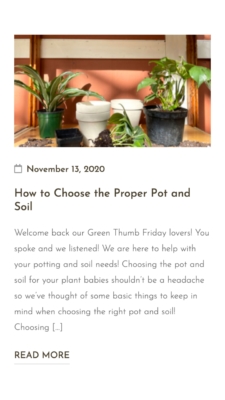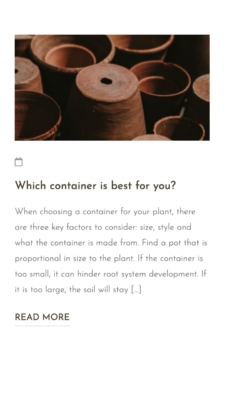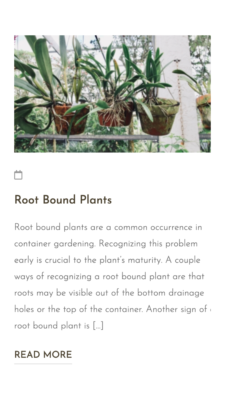Happy Green Thumb Friday!
A lovely customer recently suggested we dedicate a Green Thumb Friday post on how to figure out when it is the proper time to repot a plant. After some thinking, we thought this topic may be on others’ minds as well! Somewhat like when that one kid in class asks the question everyone has, and everyone feels relieved now that someone asked their question.
Figuring out when a plant should be repotted can be quite tricky so here are some of the tips and tricks we have for you to use in order to determine if your plant babies are in need of a new home.
Signs a Plant May Need to be Repotted:
Pot/Root Bound
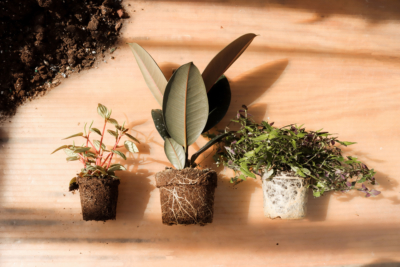
- Symptoms
- Uneven ratio of roots to loose soil
- Soil drys out at an exponential rate
In the photo above we show you the three major stages of roots. The first plant has far more soil than roots, which is a great indicator that there is a lot of room for the roots to grow. At this point no repotting is necessary. The second plants roots are more apparent, but as you see, there is still a nice even ratio of roots to loose soil. This plant is just fine in the pot it is currently in but be sure to keep an eye on the plant, as it is on its way to needing a new home. The last plant shown, is drowning in its roots, and there is no loose soil. It is essentially one big root ball. At this point your plant needs to repotted immediately into a larger pot. Our recommendation is to repot your plant into a new pot that is around 1 – 1 1/2 inches wider in diameter than the previous pot.
Nutrient Deficiency
(only a possibility if you are giving the plant nutrients and proper water)
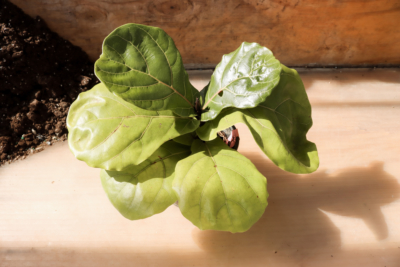
- Symptoms
- Discoloration of leaves (yellow or sickly green)
In the photo above you are able to see the bottom four leaves are yellow/sickly green in color compared to the top two leaves. The two leaves on top are new growth since being repotted with fresh soil but the nutrient deficiency in the soil before hand is shown in the old growth in the bottom four leaves. Discoloration in leaves can also happen with under or over watering so please be sure to monitor and reflect on your watering schedule. Nutrient deficiency can be a result of old soil (discussed below) and a plant being pot/root bound. If you find that your soil is nutrient deficient, all you need to do is repot your plant into new soil. If there are no signs of the plant being pot/root bound do not increase or decrease the size of the pot.
Old Soil
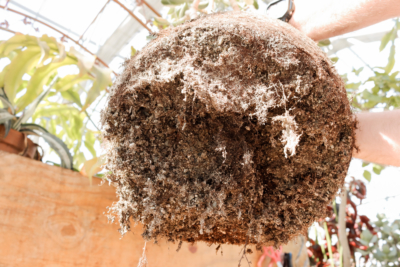
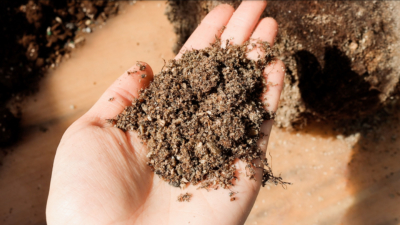
- Symptoms
- Plant can’t hold onto nutrients and water because the soil is basically ‘dust’
In the photo above you are able to see that the soil is quite ‘dull’, lacking color, and due to the lack of nutrients the soil is quite sparse and dusty. Old soil is usually found when a plant has been potted in the same pot and soil for years and has matured as a plant. This is least common as it takes a long time for soil to become ‘old soil’ but still a sign that a plant needs to be repotted. If you find that you have old soil, all you need to do is repot your plant into new soil. If there are no signs of the plant being pot/root bound do not increase or decrease the size of the pot.
If your plants have any of the symptoms above please be sure to check! When in doubt pull your plant out of their pots, check the roots, the soil, your watering schedule, and the nutrients you are giving your plant. Evaluation of plants before repotting to larger pots or with new soil is so important as misdiagnosis can lead to harming or killing your plants. Every plant is different and truly, IT DEPENDS. As much as it would be wonderful to have clear cut rules and directions in caring for our plant babies, there aren’t. The above information is very general and it is important to research your plant in particular to make sure you know what exactly your plant in specific needs in order to thrive. If you still are unsure, give us a call at 508-699-7421 and ask to speak to our greenhouse staff!
Check out other related blog posts below
